The swabs for sale in our online store are liturgical objects with a handle, made of wood or metal, and with a head with a reservoir where the Holy Water is placed. The religious swabs in our catalog also have holes that facilitate the blessing process.
The size of the swabs varies depending on the needs of each Church. In our online store of religious articles we have for sale swabs with a wide variety of sizes, small swabs with just 9 cm. long to large swabs with almost 30 cm. long.
Acetres are religious objects that are usually sold accompanied by swabs. The liturgical acetres are a deposit in which the Holy Water is while it is dispersed with the hyssop.
Religious tanks are usually made of metal or bronze and have a handle to facilitate handling.
The word "aspergillum" is derived from the Latin word "aspergere," which means "to sprinkle." In the Catholic Church, the aspergillum is associated with the sprinkling of Holy Water as a symbolic act of purifying and blessing.
An aspergillum, also known as a holy water sprinkler or aspergillum holy water, is a ceremonial tool used in the Catholic Church during religious rites.
The aspergillum is filled with Holy Water, which is then sprinkled or flicked over people, objects, or places to bless and purify them. The aspergillum is an essential part of Catholic liturgical supplies and is commonly used by priests during Mass, baptisms, and other sacramental ceremonies. It is also used during special occasions such as the Easter Vigil and the Blessing of the Holy Oils.
The terms "aspergillum" and "holy water sprinkler" are often used interchangeably, although some slight variations in design and usage may exist depending on regional customs and personal preferences.
The aspergillum is an important ceremonial tool used in the Catholic Church for the distribution of holy water.
The aspergillum allows priests and ministers to sprinkle holy water over people, objects, or places, symbolizing the cleansing and sanctification of God's blessings. It consists in a handle and a perforated or sponge-like end. It is often made of metal, such as silver or brass, and may be adorned with decorative elements. The handle provides a firm grip for the priest or minister performing the sprinkling, while the perforations or sponge allow for controlled distribution of the holy water.
In the Catholic liturgy, the aspergillum holds a significant role. It is often used during specific parts of the Mass, such as the Penitential Rite, where the sprinkling of holy water reminds the faithful of their need for purification and forgiveness. The aspergillum may also be used during special feasts and celebrations, adding a sense of reverence and solemnity to the liturgical proceedings.
The aspergillum has a rich history dating back centuries.
Throughout the centuries, the use of Holy Water and the ritual of sprinkling it with an aspergillum have been an integral part of Catholic liturgical practices.
The origins of the aspergillum can be traced back to ancient Jewish traditions. In the Old Testament, there are references to the use of hyssop branches dipped in water for purification purposes. The early Christian Church adopted this practice and incorporated it into its own rituals.
Over time, the aspergillum evolved in design and materials used. In the early days, simple branches or twigs were used as makeshift aspergillums. As the Church grew and liturgical practices became more structured, dedicated vessels were crafted specifically for this purpose.
Sale of hyssops, aspersoriums, situlae and liturgical Holy Water vessels for religious use | Sets of acetres and liturgical swabs made of metal, bronze, silver, etc...
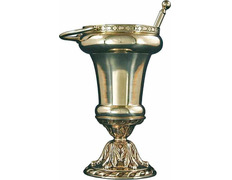
Ref: 0F1710AC

Ref: 94B32618-12715
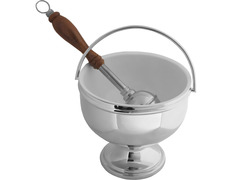
Ref: 94B1271415
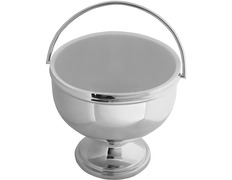
Ref: 94F12714

Ref: 94B1071415
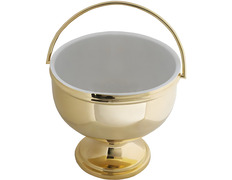
Ref: 94F10714
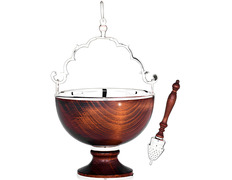
Ref: 25FBA601
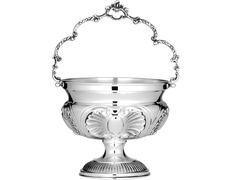
Ref: 25FAA624
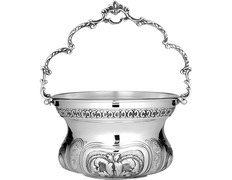
Ref: 25FAA619
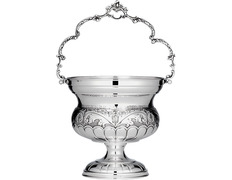
Ref: 25FAA618
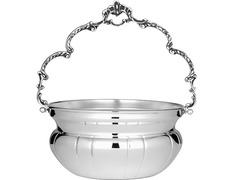
Ref: 25FAA614
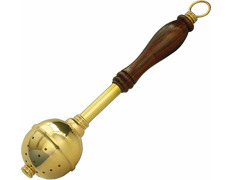
Ref: 94F10715

Ref: 94F12715

Ref: 1F701

Ref: 1F568

Ref: 1F567
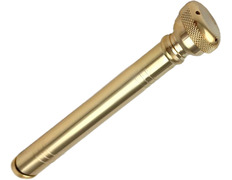
Ref: 1F561

Ref: 1F561

Ref: 1F560

Ref: 1F704
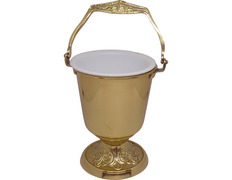
Ref: 94F30767

Ref: 94F32767

Ref: 94F32618
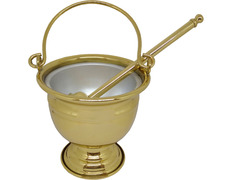
Ref: 1F4148D

Ref: 1F651

Ref: 1F650
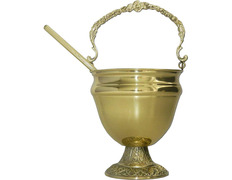
Ref: 1F1150D
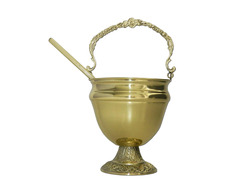
Ref: 1F1148D